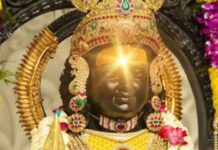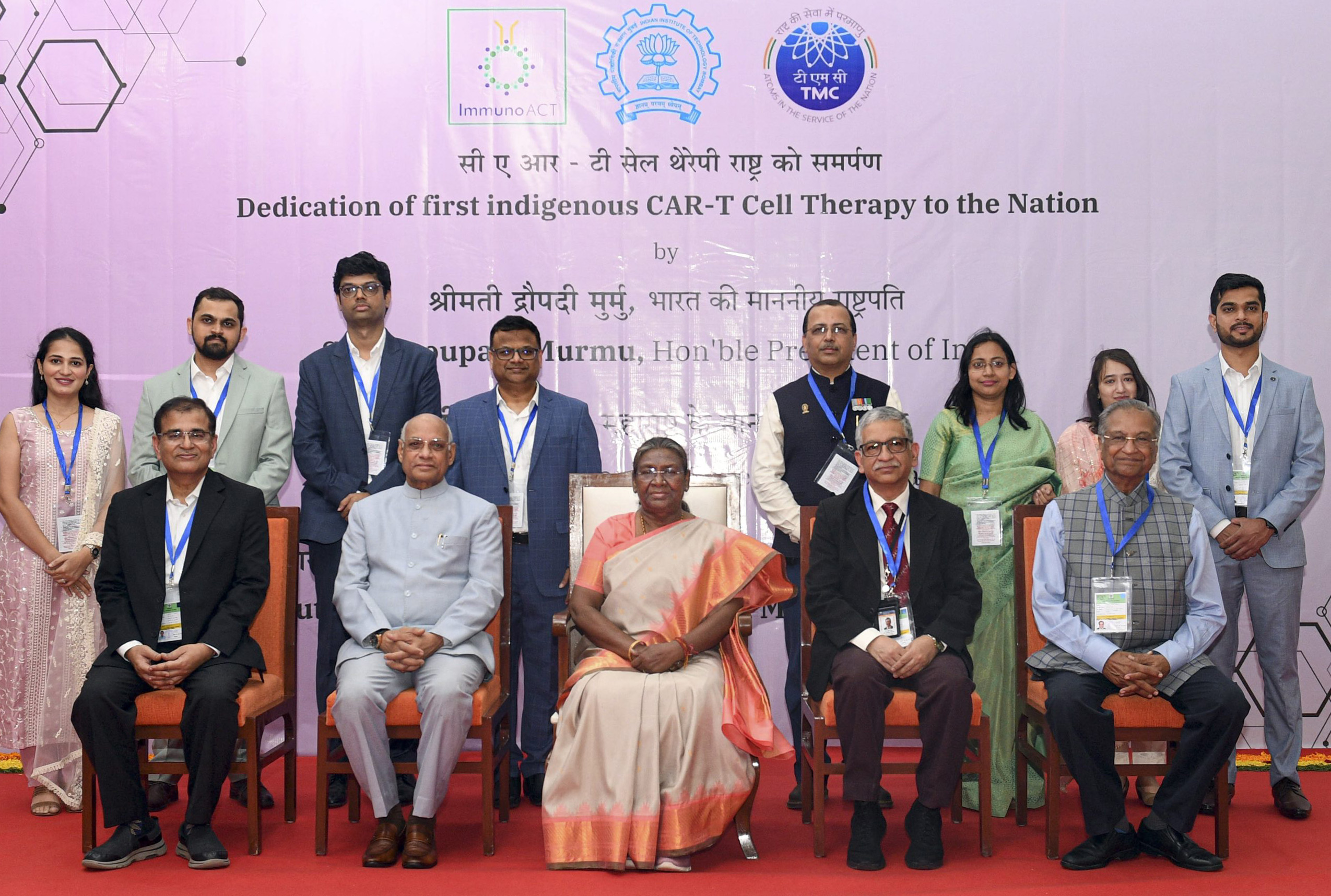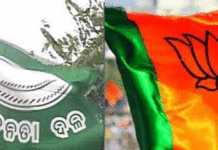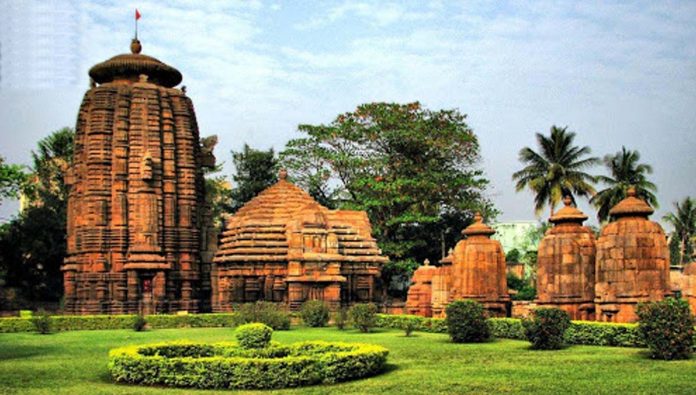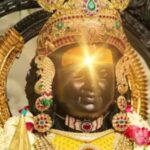Facing the south, this temple is architecturally akin to the Siddhesvara temple and, like it, has a thick-set heavy-shouldered gandi betraying. immaturity. Its bhumi-amlas are, however, rectangular. The recesses between the projections of the bada are occupied by female figures or erotic couples in the upper jangha and vidalas in the lower jangha. Of the images of the parsva-devatas, the four-armed Karttikeya with his two left hands touching a cock, and Ganesa, also four-armed, are in situ. The mataka of the jagamohana contains all the usual elements.
The right wall of the entrance of the jagamohana contains an inscription recording the donation of a perpetual lamp in front of the lord Kedaresvara by Raja Pramadi the younger brother of the Ganga king Anantavarman Chodaganga, in A.D. 1142, thus proving the existence of the temple before that date.
The rakha temple of Kedareswar Siva and that of the khakhara temple of Goddess Gauri are both situated within a common premises next two, the temple of Gauri is said to have been erected in the Bhaumakara period by one Gauri Mahadevi. The topmost part of this temple has undergone extensive repairs. Its pyramidal Jagamohana too was restored in recent years. Built on a low triratha plinth, the oblong shrine is pancharatha on plan. Both the kanika and the anuratha pagas are embellished with superimposed khakahara-mundis with kalasa on the top while the subjets of the decoration are two bho motifs almost resembling to their representation in the Mukteswara temple. the Kedareswar on the other hand is architecturally akin to the Sidheswar temple situated within the Muketswara temple premises. There is an inscription on the right jamb of the door-frame of the gagamohana of the temple which records the donation of a perpetual lamp by Paramardideva, the younger brother of Anantavarman Chodagangadeva dated. 1142 A.D. which proves the existence of the temple before that date. The temple is pancharatha in plan with paggas carved in multiple off-sets to produce rounded plan. The temple faces south contrary to the Gauri temple which faces to the east.
Three sacred pools under the name of Gauri-kunda, Dudha kunda and Chauladhua-kunda have been envisaged in the sacred complex of the Kedara-Gauri temple.
A story popularized by the eminent oriya poet Radhanatha Ray refers to the love affairs of Kedara and Gauri, the two presiding deities of the place playing the role of hero and heroine respectively. Gist of the story is given below.
The beautiful city of Bhubaneswar was established by Lalatendu Kesari with his palace and a series of hamlets. The palace was encircled by the Vmdusarovara.
The adjacent areas if Bhubaneswar then was a dense forest infested with wild and ferocious animals. In this city there lived a handsome young man named Kedara and a beautiful young maiden named Gouri. They loved each other from their very childhood. Their houses were situated on either side of a high masonry wall for which they could not meet each other inspite of their best efforts. Panents of both houses were not in good tenns. This prevented the young lovers to mix fi’eely. A small hole in the highwall only helped the young lovers to exchange words after the sun-set with tearful eyes for the impediments that stood on their way of lovemaking. In spite of the difficulties their love affairs continued unabated. After some days they ‘decided to leave their houses secretly and meet each other at the near by spring ftom where they could leave for other places with a view to find out a suitable settlement. Gauri was the first to slop away ftom her residence to the appointed place and waited there for the arrival of Kedara. But suddenly a misfortune befell upon her. A ferocious tiger with paws soaked with ftesh blood of the hunt appeared at the place. The sight of the tiger driven Gauri to hide inside a rock shelter. During her running away for shelter her scarf fell on the ground without her knowledge. The tiger straight went to the spring and drank belly-full of water and then gave way to the deep forest. While leaving the spot the tiger noticed the scarf and tom it into pieces by the sharp nails of the blood soaked paws. Blood-stains were distinctly visible on the tomout pieces of the cloth scattered there.
After some time Kedar arrived at the place and was terrified to see the foot-prints of the tiger and the blood stained scarf of Goori to which he is much familiar. He could immediately realize that Gauri had been devoured by the tiger. He was at terrible loss to decide the next course of action to be followed. In a mood of frenzy he plunged the sharp dagger held in the waist to his heart and fell on the ground. In the meantime Gauri came out of the rock-shelter in search ofKedara and found him dying in agony. Kedara saw her for moment and breathed his last. Gauri too sacrificed her life in the way her over did.
King Lalatendukesari was a dream in the night on this incident and rushed to she spot the next morning only to see the dead bodies of Kedar and Gauri lying on the ground. At the instance of the king the dead bodies were burnt at the spot and as a mark of respect to the noble sould two temples were erected and named as Kedara and Gauri.
This temple facing the east, though a specimen of the khakhara Order (locally known as Gaurichala), has striking affinities with the Mukteswara temple both in respect of decorative details and style of execution and. thus. cannot be far removed in date ftom it. The mastaka has undergone restoration with the result that its plastered and whitewashed surface presents a dire contrast to the lavishly-decorated purplish-red body of the temple. the Jagamohana was erected some sixty years back to replace the dilapidated original one.
Built on a low tri-ratha plinth. supported by squattish dwarf\. the oblong deul is pancharatha on plan. The ornamentation of the bada resembles that of the Mukteswara temple, though we have here naga-or nagipilasters only on the longer sides. The scheme of decoration., however, differs in the gandi. Nowhere is there any representation of amlas or bhumi-amlas. Both the kanika and anuratha-pagas are decorated with two superimposed khakhara-kundis with a kalasa on the top, while the subjects of the decoration of the raha are two bho-motifs as in the Mukteswara temple. a bold moulding relieved with lotuspetals marks off the gandi ftom the mastaka. The latter, now consisting of two khakharas, with a recess in between, maintains the paga-divisions throughout and is crowned by a kalasa.
Like the Mukteswara temple, this temple is noted for the exuberance of ornamentation. The nayikas in various flezxuous poses are mostly damaged. but few intact figures, like the one, on the south face of the east raha, leaning against a post on which is perched a bird, and the other, on the west raha, taking off her anklets, are remarkable for their masterly treatment.







